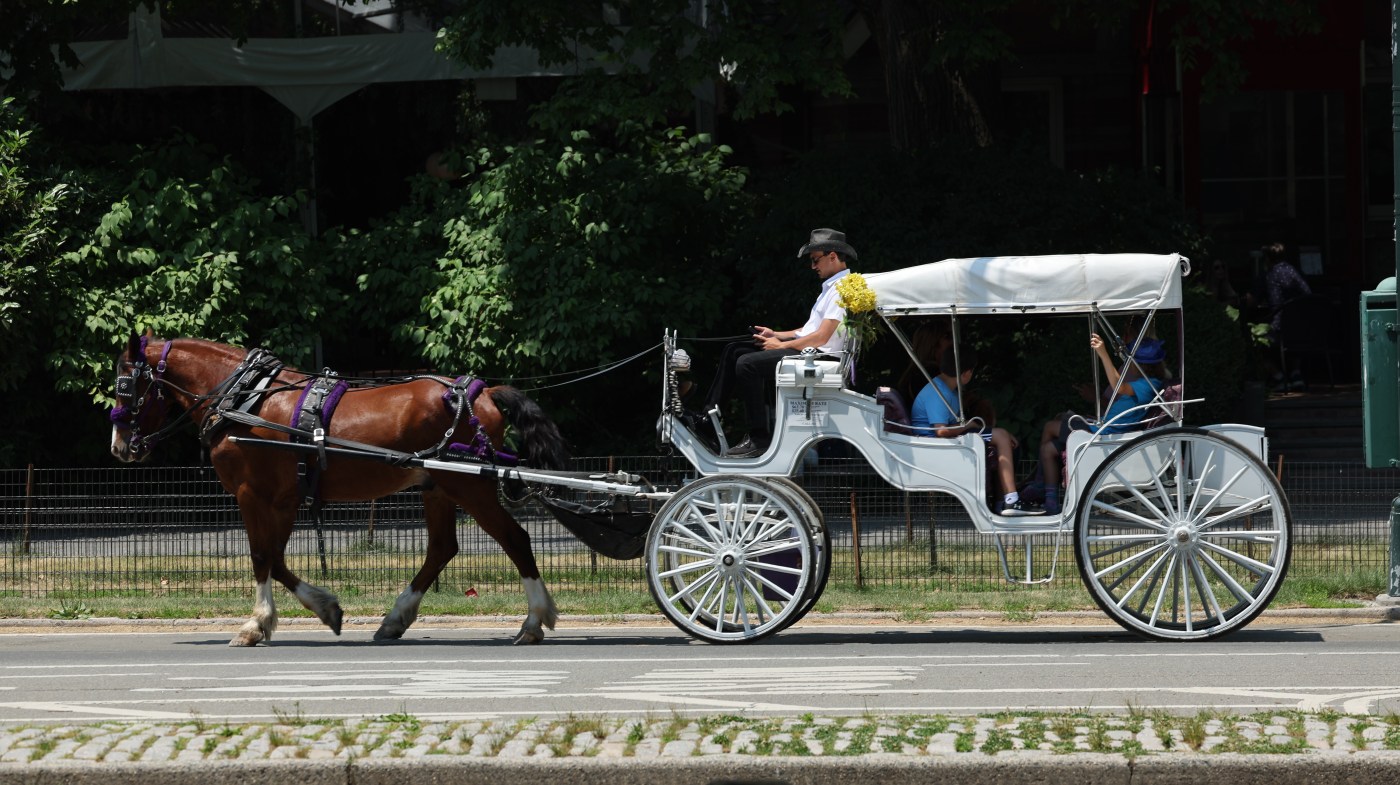Politics
New York Moves to End Horse-Drawn Carriages in Central Park

New York City is set to abolish the horse-drawn carriage industry, a move that has garnered significant public support and attention. Mayor Eric Adams announced an executive order aimed at phasing out this long-standing practice, citing safety concerns for both the horses and the public. With more than 70% of New Yorkers reportedly in favor of this ban, the administration is pushing for the City Council to pass Ryder’s Law to formalize the change.
The history of horse-drawn carriages in New York City dates back to the early 17th century, when horses were first brought by the Dutch in 1625. Initially, they served essential roles in transporting goods and people. However, as automobiles became more prevalent in the 20th century, the reliance on horse-drawn carriages declined significantly. Today, their presence in Central Park is viewed more as a nostalgic relic than a necessary service.
Recent incidents involving carriage horses have heightened concerns about safety. Just last month, a horse ran off without a driver, prompting passengers to leap from the moving carriage. Earlier incidents included a pair of runaway horses that injured a driver and others nearby. These events are compounded by the tragic deaths of two horses, Ryder and Lady, who collapsed in the street, raising ethical questions about the industry.
In response to these incidents, the administration convened stakeholders, including animal welfare advocates and carriage drivers, to discuss solutions. “For the health of the horses and for the protection of New Yorkers—riders, passengers, and pedestrians alike—we signed an executive order to prepare for the end of the horse-drawn carriage industry in our city,” said Adams.
Polls indicate strong consensus among the public, with the Central Park Conservancy also calling for a ban. Notably, all major mayoral candidates have expressed support for the initiative, demonstrating a rare alignment among political factions. Adams emphasized that the safety of New Yorkers is paramount and that the time has come to end this “archaic, unsafe practice.”
While the move aims to protect animal welfare and public safety, it also seeks to provide support for those currently employed in the carriage industry. The administration plans to identify new job opportunities for carriage drivers and explore alternative options, such as electric carriages, to ensure a smooth transition.
Critics, including the Transport Workers Union Local 100, have voiced concerns that the executive order undermines working-class New Yorkers. Union leaders claim that the decision favors affluent interests, although they have not provided evidence to support these assertions. In contrast, many community advocates and safety officials have rallied behind the ban, citing clear risks to public safety and animal welfare.
“Our proposal is not about eliminating tradition; it’s about honoring our traditions in a way that aligns with who we are today,” Adams stated. He stressed the importance of addressing public concerns about safety and ethics in the carriage industry.
As the city approaches the 400-year mark since the first horse-drawn carriage traversed its streets, many hope that the final chapter for this industry will soon be written. The administration is committed to pushing for comprehensive reform and ensuring that New York City remains a safe and humane environment for all its residents, including its animal inhabitants.
-

 Science4 weeks ago
Science4 weeks agoALMA Discovers Companion Orbiting Giant Red Star π 1 Gruis
-

 Top Stories2 months ago
Top Stories2 months agoNew ‘Star Trek: Voyager’ Game Demo Released, Players Test Limits
-

 Politics2 months ago
Politics2 months agoSEVENTEEN’s Mingyu Faces Backlash Over Alcohol Incident at Concert
-

 World2 months ago
World2 months agoGlobal Air Forces Ranked by Annual Defense Budgets in 2025
-

 World2 months ago
World2 months agoMass Production of F-35 Fighter Jet Drives Down Costs
-

 World2 months ago
World2 months agoElectrification Challenges Demand Advanced Multiphysics Modeling
-

 Business2 months ago
Business2 months agoGold Investment Surge: Top Mutual Funds and ETF Alternatives
-

 Science2 months ago
Science2 months agoTime Crystals Revolutionize Quantum Computing Potential
-

 Top Stories2 months ago
Top Stories2 months agoDirecTV to Launch AI-Driven Ads with User Likenesses in 2026
-

 Entertainment2 months ago
Entertainment2 months agoFreeport Art Gallery Transforms Waste into Creative Masterpieces
-

 Business2 months ago
Business2 months agoUS Government Denies Coal Lease Bid, Impacting Industry Revival Efforts
-

 Health2 months ago
Health2 months agoGavin Newsom Critiques Trump’s Health and National Guard Plans









